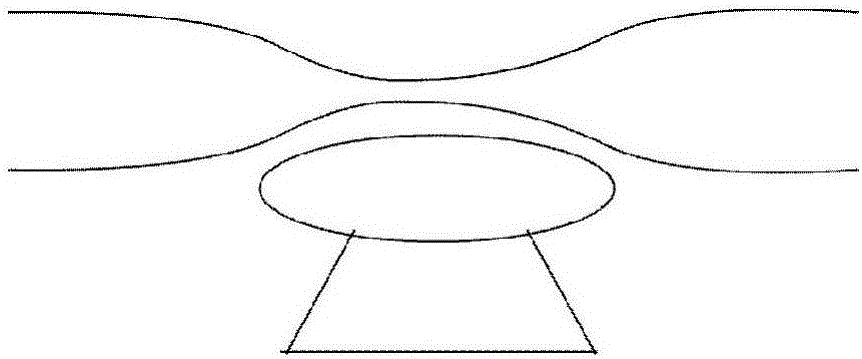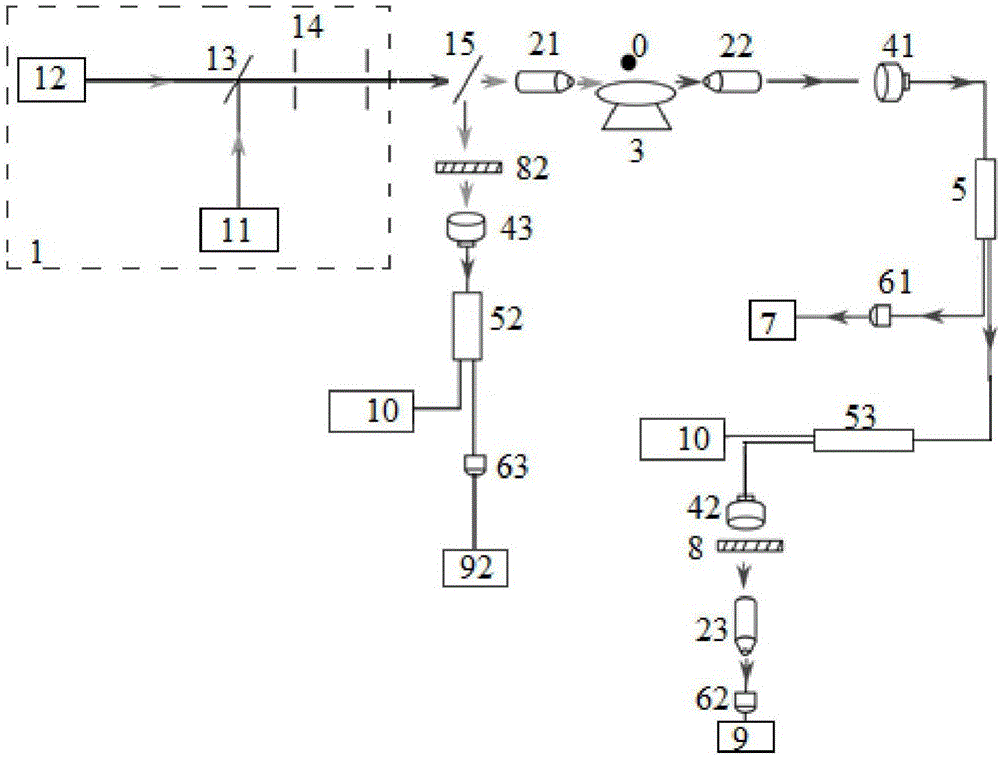Free-space optical micro-cavity Raman laser sensing device and sensing method thereof
An optical microcavity and Raman laser technology, which is applied in the direction of transmitting sensing components, optics, lasers, etc. by using optical devices, can solve the problems of easy breakage of optical fiber cones, reduction of signal-to-noise ratio, and changes, so as to reduce the detection limit, The effect of increasing flexibility and reducing the signal-to-noise ratio
- Summary
- Abstract
- Description
- Claims
- Application Information
AI Technical Summary
Problems solved by technology
Method used
Image
Examples
Embodiment 1
[0041] like figure 2 As shown, the free space optical microcavity Raman laser sensing device of this embodiment includes: a laser light source 1, a first focusing objective lens 21, an optical microcavity 3, a second focusing objective lens 22, a first collimating lens 41, an optical fiber splitter The beam filter 5, the first photodetector 61, the oscilloscope 7, the second collimating lens 42, the long-pass filter 8, the third focusing objective lens 23, the second photodetector 62 and the fundamental spectrum analyzer 9; Nano-sized particles 0 are attached to the surface of the microcavity 3 .
[0042] In this embodiment, the optical microcavity adopts a non-rotationally symmetric dielectric solid body, such as a deformed micro-core ring, a deformed spherical cavity, etc., which supports a high-quality whispering gallery mode, which can realize directional laser output, and the dielectric optical microcavity There can be one or more incoming and outgoing light directions....
Embodiment 2
[0045] like image 3 As shown, in this embodiment, a triangular prism 15 is added between the light source 1 and the first focusing objective lens 21, and the Raman laser of the optical microcavity 3 attached with the nano-sized particles 0 is excited in the whispering gallery mode; Opposite the direction of the incident light, return along the direction opposite to the direction of the incident light, and collect the reverse outgoing light by the first focusing objective lens 21 to the triangular prism 15. The reverse outgoing light includes laser, whispering gallery mode and Raman laser; reverse The outgoing light is reflected by the prism 15 to the second long-pass filter 82 to filter out the laser and the whispering gallery mode, and then enters the second fiber beam splitter 52 through the third collimating lens 43, and 30% of the optical signal is collected by the spectrometer 10 and analyzed. The wavelength of the Raman laser; the other 70% of the optical signal enters ...
Embodiment 3
[0047] In Example 1 and Example 2, the wavelength range of the whispering gallery mode is obtained and the outgoing light in the same outgoing light direction is collected by analyzing the Raman laser beat frequency. In this embodiment, outgoing light in different outgoing light directions is collected.
[0048] like Figure 4 As shown, the free-space optical microcavity Raman laser sensing device of this embodiment includes: a laser light source 1, a first focusing objective lens 21, an optical microcavity 3, a second focusing objective lens 22, a first collimating lens 41, a second The collimating lens 42 , the first photodetector 61 , the oscilloscope 7 , the long pass filter 8 , the third focusing objective 23 , the second photodetector 62 and the fundamental spectrum analyzer 9 . The broadband tunable frequency laser 11 provides a broadband frequency sweep laser, and the laser is coupled into the optical microcavity 3 through the first focusing objective lens 21 through t...
PUM
 Login to View More
Login to View More Abstract
Description
Claims
Application Information
 Login to View More
Login to View More - R&D
- Intellectual Property
- Life Sciences
- Materials
- Tech Scout
- Unparalleled Data Quality
- Higher Quality Content
- 60% Fewer Hallucinations
Browse by: Latest US Patents, China's latest patents, Technical Efficacy Thesaurus, Application Domain, Technology Topic, Popular Technical Reports.
© 2025 PatSnap. All rights reserved.Legal|Privacy policy|Modern Slavery Act Transparency Statement|Sitemap|About US| Contact US: help@patsnap.com



